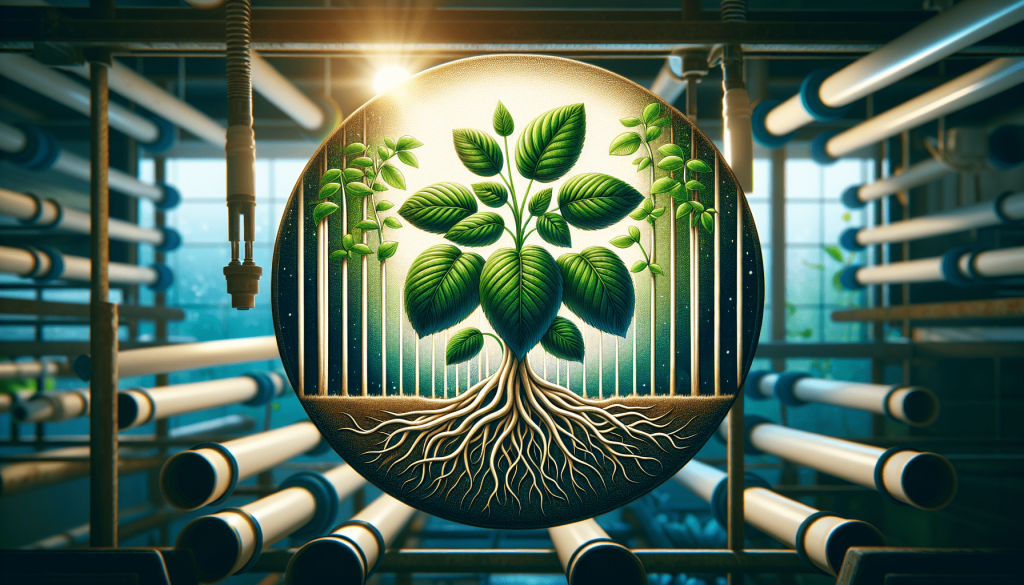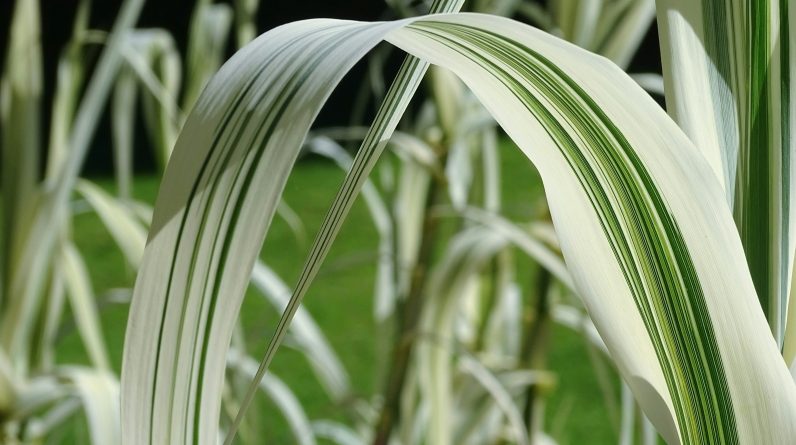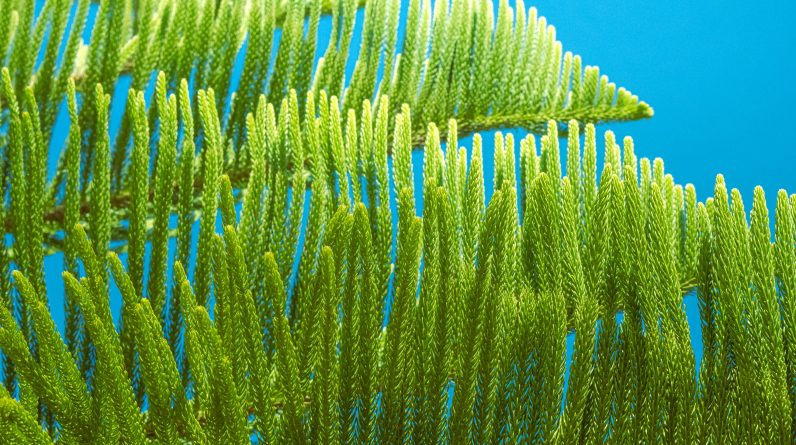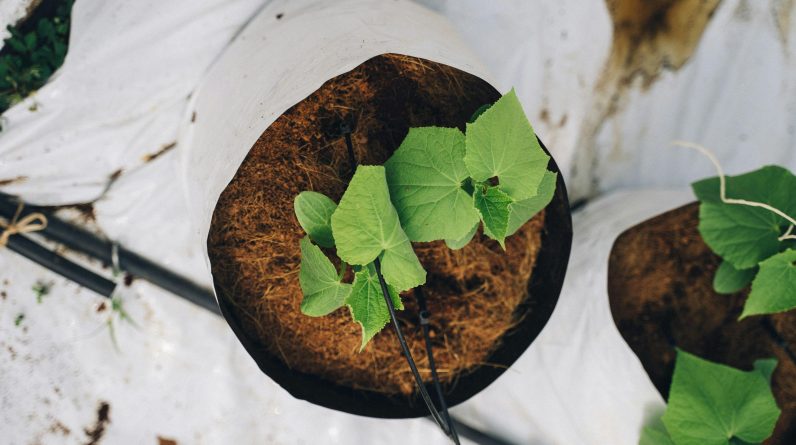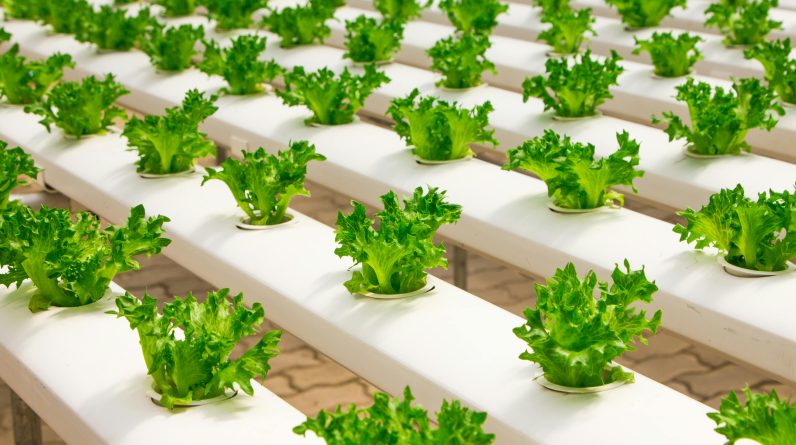
If you’re diving into the world of hydroponic growing systems, you may encounter some common challenges along the way. From nutrient imbalances to pest infestations, these hiccups can be frustrating for any aspiring hydroponic gardener. It’s important to stay optimistic though, as there are practical solutions to overcome these hurdles and ensure your plants thrive. In this article, we’ll explore some of the most frequent difficulties that hydroponic growers face, and offer friendly advice on how to conquer them with ease. Get ready to unlock the secrets of successful hydroponic gardening!

Water Quality
Maintaining Proper pH Levels
Maintaining proper pH levels is crucial for hydroponic growing systems. pH refers to the acidity or alkalinity of the water, and it affects the availability of nutrients to plants. The ideal pH range for most hydroponic plants is between 5.5 and 6.5. To maintain this range, it is important to regularly test the water and adjust the pH as needed. pH testing kits are readily available and easy to use. If the pH is too high, you can lower it by adding pH down solutions. Conversely, if the pH is too low, you can raise it by adding pH up solutions. Regular monitoring and adjustment of pH will ensure optimal nutrient uptake by the plants.
Controlling Nutrient Levels
Controlling nutrient levels in hydroponic systems is vital to ensure healthy plant growth. Hydroponic plants rely on nutrient solutions instead of soil for their nourishment. These nutrient solutions need to contain the right balance of essential elements such as nitrogen, phosphorus, and potassium, as well as micronutrients like iron, manganese, and zinc. It is important to follow a nutrient schedule and regularly test the nutrient levels using electrical conductivity (EC) meters or nutrient testing kits. Adjusting the nutrient solution as per the specific needs of the plants will help prevent nutrient deficiencies or toxicities.
Preventing Contamination
One of the challenges in hydroponic growing systems is the risk of contamination. Contaminated water or equipment can introduce harmful bacteria, fungi, or pests that can damage or kill the plants. To prevent contamination, it is essential to maintain good hygiene and sanitation practices. Regularly clean and sterilize the growing containers, pipes, and any other equipment used in the system. Use clean water from a reliable source or consider using a water sterilization system to kill any pathogens. Additionally, practice good handling techniques and avoid introducing pests or diseases from outside sources. Taking these preventive measures will help ensure a healthy and thriving hydroponic garden.
Temperature and Humidity Control
Monitoring and Adjusting Temperature
Temperature plays a critical role in the success of hydroponic growing systems. Most crops thrive in temperatures between 20 to 25 degrees Celsius (68 to 77 degrees Fahrenheit). It is important to monitor and maintain a stable temperature within this range to optimize plant growth. Use a thermometer to regularly check the temperature of both the air and the nutrient solution. If the temperature is too high, consider using cooling systems such as ventilation fans or air conditioning. Conversely, if the temperature is too low, use heating devices or insulation to provide warmth. Maintaining the appropriate temperature will create a favorable environment for plant growth.
Regulating Humidity Levels
Humidity, the amount of moisture in the air, is another vital factor in hydroponic growing systems. Different plants have varying humidity requirements, but as a general rule, maintaining humidity levels between 50% to 70% is ideal. High humidity can promote the growth of molds and fungi, while low humidity can lead to excessive water loss through evaporation. To regulate humidity levels, consider using dehumidifiers or humidifiers as needed. Good ventilation and proper air circulation can also help control humidity. It is important to regularly monitor and adjust humidity levels to provide the ideal growing conditions for your plants.
Preventing Heat Stress
Heat stress is a common challenge in hydroponic growing systems, especially during hot summer months. High temperatures can cause damage to the plants, leading to stunted growth, wilting, and even death. To prevent heat stress, it is crucial to provide adequate shading and ventilation. Install shade cloths or use reflective materials to reduce the amount of direct sunlight reaching the plants. Promote air circulation by using fans or ventilation systems. Another useful technique is misting, which involves spraying water on the plants to cool them down. By implementing these measures, you can protect your plants from heat stress and ensure their healthy development.
Lighting
Choosing the Right Light Source
In hydroponic growing systems, artificial lighting is used to simulate sunlight and provide the necessary energy for photosynthesis. Choosing the right light source is crucial for optimal plant growth. There are various options available, including fluorescent, LED, and high-intensity discharge (HID) lights. Each type has its advantages and considerations, such as energy efficiency, light spectrum, and heat production. LED lights are popular choices for hydroponic systems due to their efficiency and ability to provide specific light spectra for different growth stages. Consider the requirements of your plants and select a lighting system that meets their needs.
Providing Proper Light Intensity and Duration
Along with choosing the right light source, providing the proper light intensity and duration is essential for successful hydroponic growing. Each plant has specific light requirements, including the intensity of light it needs and the number of hours it should receive. Insufficient light can lead to weak, leggy plants, while excessive light can cause burning or light stress. Consult plant-specific lighting guidelines or seek advice from experienced hydroponic growers to determine the optimal light intensity and duration for your plants. Use timers to ensure consistent lighting schedules and maintain the recommended distance between the lights and the plants.
Preventing Light Burn
Light burn is a common issue in hydroponic growing systems, particularly when using high-intensity lighting. Light burn occurs when plants are exposed to excessive light, causing leaf damage or even plant death. To prevent light burn, it is important to maintain the appropriate distance between the light source and the plants. The distance may vary depending on the type of light and the plant’s light requirements. Regularly monitor the plants for signs of light burn, such as yellowing or browning of leaves, and adjust the distance accordingly. By providing the right amount of light without causing harm, you can ensure optimal plant growth in your hydroponic system.
Nutrient Imbalances
Understanding Essential Nutrients
In hydroponic growing systems, plants rely on nutrient solutions for their essential nutrients. Understanding the essential nutrients required by your plants is crucial for maintaining healthy growth. The primary nutrients needed in larger quantities are nitrogen (N), phosphorus (P), and potassium (K). These are often found in balanced hydroponic nutrient solutions. Additionally, plants also require secondary nutrients like calcium (Ca), magnesium (Mg), and sulfur (S), as well as various micronutrients. These micronutrients include iron (Fe), manganese (Mn), zinc (Zn), and others. Understanding the roles of each nutrient and their optimal ranges will help you ensure a balanced nutrient solution.
Monitoring and Adjusting Nutrient Solution
To avoid nutrient imbalances, it is important to regularly monitor and adjust the nutrient solution in your hydroponic system. This can be done by measuring the electrical conductivity (EC) or total dissolved solids (TDS) of the nutrient solution. These measurements indicate the concentration of nutrients in the solution. Use a reliable EC meter or TDS meter to check the nutrient levels and compare them to the recommended ranges for your plants. If the levels are too high, dilute the solution with fresh water. Conversely, if the levels are too low, add more nutrient solution as needed. Regular monitoring and adjustment will help ensure that your plants receive the right balance of nutrients.
Avoiding Toxicity or Deficiency
Finding the right balance in nutrient levels is crucial to prevent nutrient toxicity or deficiency in hydroponic growing systems. Nutrient toxicity occurs when nutrient levels in the solution are too high, causing harm to the plants. On the other hand, nutrient deficiency occurs when the levels are too low, leading to stunted growth and poor health. Regular monitoring of nutrient levels will help you catch any imbalances early on. Pay attention to the appearance of your plants, as certain nutrient deficiencies or toxicities can cause specific symptoms. Adjusting the nutrient solution promptly will help prevent these issues and ensure healthy plant growth.

Pest and Disease Control
Implementing Integrated Pest Management
Pests and diseases can pose significant challenges in hydroponic growing systems. Implementing integrated pest management (IPM) strategies is crucial to prevent and control these issues effectively. IPM involves a combination of cultural practices, biological controls, physical barriers, and the strategic use of pesticides when necessary. Regularly inspect your plants for any signs of pests or diseases, such as chewed leaves or unusual spots. Encourage beneficial insects like ladybugs and lacewings to control pests naturally. Use sticky traps or physical barriers like nets to prevent pests from reaching your plants. If pesticide use becomes necessary, choose organic or botanically-derived products and strictly follow the instructions to minimize any potential harm.
Maintaining Proper Hygiene and Sanitation
Maintaining proper hygiene and sanitation practices is essential for preventing the spread of pests and diseases in hydroponic systems. Good hygiene includes regular cleaning and sterilization of equipment, growing containers, and tools. Rinse out any debris from the system and ensure that there are no stagnant water sources that can attract pests or foster the growth of harmful organisms. Dispose of any dead or decaying plant matter promptly, as it can serve as a breeding ground for pathogens. Additionally, practice good personal hygiene, such as washing hands thoroughly before handling plants or equipment. By maintaining a clean and sanitized environment, you can minimize the risk of pest and disease outbreaks.
Identifying and Treating Common Pests and Diseases
Even with preventive measures in place, pests and diseases can still affect hydroponic growing systems. It is important to be able to identify common pests and diseases and take appropriate action to treat them. Regularly inspect your plants for any signs of infestation or infection, such as chewed leaves, webbing, mold, or wilting. Common pests in hydroponic systems include aphids, spider mites, and whiteflies, while diseases like powdery mildew and root rot can also occur. Consult pest and disease identification guides or seek advice from experienced growers to accurately identify the issue. Once identified, choose the appropriate treatment method, whether it’s organic sprays, biological controls, or cultural practices like pruning affected parts. Swift and targeted action can help minimize the impact on your plants and prevent further spread.
Plant Support and Growth
Choosing the Appropriate Growing Medium
Choosing the right growing medium is crucial for providing support and promoting healthy root development in hydroponic growing systems. The growing medium serves as a stabilizer, allowing the plants to anchor their roots and access the nutrient solution. Common growing mediums used in hydroponics include Rockwool, perlite, vermiculite, and coconut coir. Each has its own characteristics and benefits. Consider factors such as water retention, aeration, and pH stability when selecting the appropriate medium for your plants. Properly supporting the plants from the start will help ensure their stability and promote overall growth.
Providing Sufficient Support for Plants
Proper support is necessary to sustain healthy growth and prevent damage to plants in hydroponic systems. As the plants grow, they can become top-heavy or require training for optimal development. Providing support structures like trellises, cages, or stakes will help prevent bending or breaking of stems, especially for vining or tall plants. Additionally, consider using plant clips or ties to secure the plants to their support structures. As the plants flourish, regularly inspect the support systems and adjust as needed to accommodate their growth. By providing sufficient support, you can ensure that your plants can grow to their full potential.
Encouraging Proper Root Development
In hydroponic growing systems, proper root development is crucial for healthy and robust plants. Unlike traditional soil-based cultivation, hydroponics allows for direct access to water and nutrients. This requires careful attention to root health and development. To encourage proper root growth, provide oxygenation and aeration through the use of air stones or air pumps. This ensures a sufficient supply of oxygen to the roots, preventing suffocation. Regularly check the roots for any signs of rot or discoloration and take immediate action if any issues arise. Routine pruning of root systems can also help stimulate new growth. By prioritizing root health, you can support strong and thriving plants in your hydroponic system.

Oxygenation and Aeration
Ensuring Adequate Oxygen Levels
Adequate oxygen levels are essential for plant growth in hydroponic systems. Roots need oxygen to perform cellular respiration, which is crucial for nutrient uptake and overall plant health. Insufficient oxygen can lead to root suffocation and the development of anaerobic conditions, which can be detrimental to plants. To ensure adequate oxygenation, consider using air stones or air pumps to introduce air bubbles into the nutrient solution. This constant agitation helps oxygenate the water and provide a sufficient oxygen supply to the roots. Regularly check the oxygen levels using dissolved oxygen meters and adjust the aeration system as needed. By prioritizing oxygenation, you can promote thriving plant growth in your hydroponic system.
Promoting Proper Air Circulation
Proper air circulation is vital for maintaining optimal growing conditions in hydroponic systems. Good air circulation helps prevent the buildup of stagnant air and humidity, reducing the risk of mold, mildew, or other pathogens. It also helps distribute carbon dioxide (CO2) evenly, which is essential for photosynthesis. To promote air circulation, strategically place fans or ventilation systems in your growing area. The gentle movement of air will ensure that fresh air reaches all parts of the plants. Regularly monitor the temperature, humidity, and airflow in your system to ensure a continuous exchange of air. By promoting proper air circulation, you can create a healthy and efficient environment for your plants.
Avoiding Root Suffocation
Root suffocation is a common issue in hydroponic systems when there is insufficient oxygen supply to the roots. It can lead to root rot, poor nutrient uptake, and plant decline. To avoid root suffocation, it is crucial to ensure proper oxygenation and aeration, as mentioned earlier. Additionally, avoid overwatering the plants, as excessive moisture can limit the amount of oxygen available to the roots. Implement a regular watering schedule and allow the growing medium to partially dry out before the next watering. Regularly inspect the roots for any signs of rot, discoloration, or foul odors. If root suffocation is detected, take immediate action by adjusting the oxygenation system and reducing the frequency of watering. By proactively addressing root suffocation, you can maintain healthy root systems and thriving plants in your hydroponic garden.
System Maintenance
Cleaning and Sterilizing Equipment
Regular cleaning and sterilization of equipment is crucial for maintaining the health and efficiency of your hydroponic growing system. Over time, organic matter, algae, and mineral deposits can build up on surfaces, pipes, or pumps, providing a breeding ground for pathogens. Regularly clean the reservoir, growing containers, and any other equipment with a mild cleaning solution or hydrogen peroxide. This will help remove any organic debris or mineral deposits. Additionally, sterilize the equipment periodically using a diluted bleach solution or hydrogen peroxide. This ensures the elimination of harmful bacteria, fungi, or pests. By practicing good maintenance habits, you can keep your hydroponic system clean and free from potential sources of contamination.
Regularly Inspecting and Repairing
Regular inspections are essential to catch any issues or malfunctions in your hydroponic growing system. Inspect all components, including pumps, timers, filters, and sensors, for any signs of wear, damage, or malfunction. Check for leaks or clogs in the pipes and ensure that the water flow is uninterrupted. Pay attention to any abnormal sounds or vibrations that may indicate a problem. Promptly repair or replace any faulty parts to prevent further damage or disruptions. Regular inspections and timely maintenance will help ensure the smooth operation of your hydroponic system and prevent potential setbacks in plant growth.
Preventing Clogs and Blockages
Clogs and blockages can occur in a hydroponic system, impeding the flow of water, nutrient solution, or air. These obstacles can disrupt the distribution of nutrients and oxygen to the plants, causing stress or damage. To prevent clogs and blockages, use filters or screens to remove large debris from the nutrient solution. Regularly inspect and clean the pipes, pumps, and filters to remove any accumulated debris or mineral buildup. Avoid using organic matter, excessive nutrient additives, or poorly soluble substances that can cause blockages. Regular maintenance and careful management of the system will help prevent clogs and blockages, ensuring optimal plant growth in your hydroponic garden.
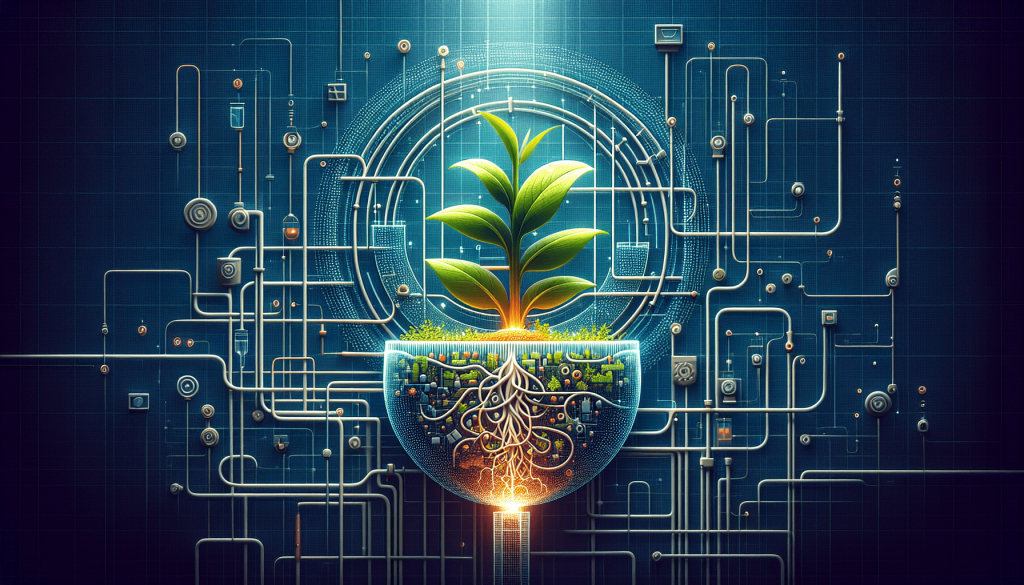
System Monitoring and Automation
Using Sensors and Monitoring Devices
Monitoring the key parameters of your hydroponic system is crucial for maintaining optimal growing conditions. Sensors and monitoring devices can provide real-time information about factors such as temperature, humidity, pH levels, and nutrient concentrations. Use pH meters, temperature sensors, and humidity monitors to keep track of these variables. Installing an electrical conductivity (EC) meter or a TDS meter will help you regularly monitor the nutrient levels and adjust the nutrient solution as needed. Automated monitoring systems are available that can send notifications or alerts if any parameter falls outside the desired range. By using sensors and monitoring devices, you can have better control and make informed decisions to ensure the success of your hydroponic growing system.
Implementing Automation for Control
Automation can greatly improve the efficiency and consistency of your hydroponic growing system. Automated systems can regulate and control various aspects such as lighting, temperature, humidity, nutrient dosing, and irrigation. For example, automatic timers can ensure consistent lighting schedules, while programmable controllers can manage temperature and humidity levels. Dosing pumps can accurately deliver the required amount of nutrients to the plants. These automated systems can save time, reduce human error, and create a more stable environment for plant growth. Consider implementing automation in your hydroponic system to streamline operations and achieve optimal results.
Maintaining Data Records for Analysis
Maintaining data records is essential for analyzing and optimizing the performance of your hydroponic system. Keep track of various parameters such as nutrient levels, pH readings, temperature, humidity, and yield data. This information can help you identify trends, pinpoint potential issues, or make adjustments for better results in the future. Use spreadsheets, digital logs, or specialized software to record and organize the data. Regularly review and analyze the data to gain insights and make informed decisions. By maintaining detailed records, you can continuously improve your hydroponic system and achieve greater efficiency and productivity.
Scaling Up and Expansion
Planning for Increased Production
As your hydroponic garden thrives, you may consider scaling up or expanding your production. Proper planning is essential to ensure a smooth transition and successful expansion. Assess your current production capacity and the demands of your market. Determine the additional resources, space, and equipment required for scaling up. Consider factors such as lighting, nutrient supply, and climate control systems. Consult with experts or experienced growers to gain insights and advice. Develop a detailed plan that outlines the steps, costs, and timelines for the expansion. By planning for increased production, you can effectively meet the growing demand and maximize the potential of your hydroponic growing system.
Managing Space and Resources
As your hydroponic system expands, efficient utilization of space and resources becomes imperative. Optimize the layout of your growing area to accommodate additional plants without overcrowding. Utilize vertical space by incorporating trellises or shelves for optimal plant density. Ensure adequate spacing between plants to allow for proper airflow and light penetration. Efficiently manage resources such as water, nutrients, and electricity by implementing smart irrigation systems, recycling nutrient solutions, and using energy-efficient equipment. By managing space and resources effectively, you can maximize productivity and minimize waste in your hydroponic growing system.
Considering Economical and Sustainable Practices
When scaling up your hydroponic growing system, it is important to consider economical and sustainable practices. Evaluate the costs and benefits of different methods, equipment, and technologies. Consider investing in energy-efficient lighting systems, water-saving technologies, or renewable energy sources. Explore the use of organic or locally sourced inputs to minimize environmental impact and appeal to eco-conscious consumers. Implement recycling and waste management strategies to minimize the ecological footprint of your hydroponic garden. By embracing economical and sustainable practices, you can create a successful and environmentally responsible hydroponic growing system.
In conclusion, hydroponic growing systems offer unique advantages and present their own set of challenges. By maintaining proper water quality, controlling temperature and humidity, providing the right lighting, managing nutrient imbalances, implementing pest and disease control measures, ensuring plant support and growth, promoting oxygenation and aeration, conducting regular system maintenance, monitoring and automating where possible, and planning for scaling up and expansion, you can overcome these challenges and create a healthy and productive hydroponic garden. Remember to always stay vigilant, be proactive in addressing issues, and continue learning and adapting to optimize your hydroponic growing system. Happy growing!
